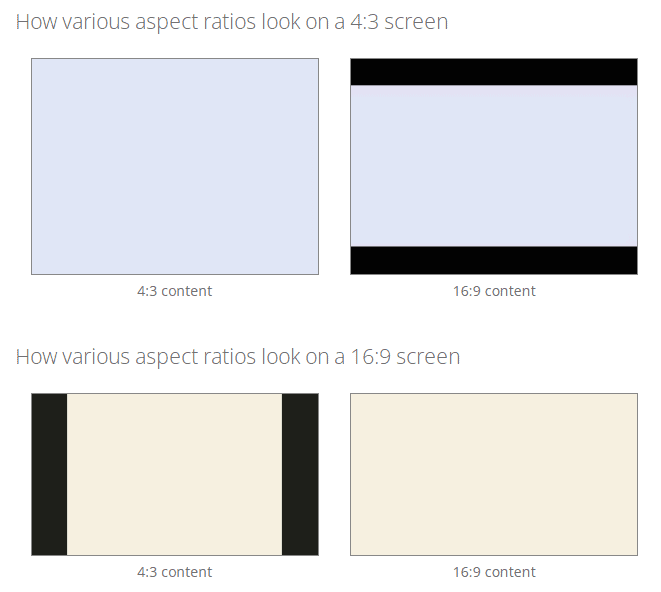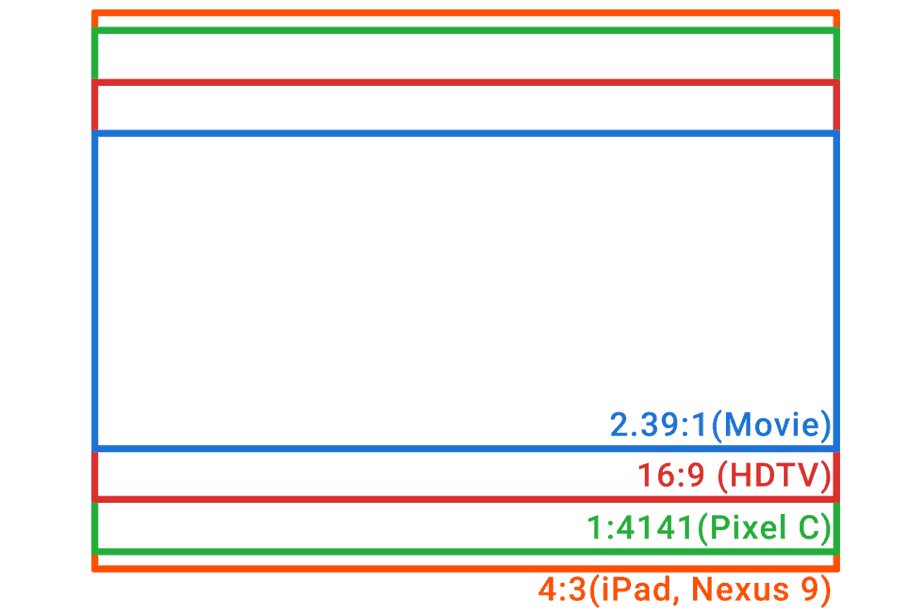An aspect ratio is the ratio of height to width for an image. In the instance of projector screens, it refers to the proportion of a projected as well as a optimal video images. Consider 16:9 vs 4:3. For instance, if you have the four-to-three aspect ratio, that means for every 3 inches of height, you receive four inches of width.
When it comes to screens, this means that you have a square-shaped screen in all formats of TV of the 1990s onwards included. 4:3 was considered to be the aspect ratio norm during the early days of widescreen standard definition (SD) television.
But, due to the advent of high definition television in the latter half of the 2000s and the decade of 2010 16:9 was the standard today.
As widescreen televisions and HDMI connections were more commonplace and more common, the 16:9 aspect ratio became more popular. This means that for each 16 inches of wide, the image will be 9 inches tall. What are the variations of 16:9 vs 4:3 projector screen? Check out the article to learn more.
What Is Aspect Ratio?
Aspect ratio is the ratio of the dimensions of the video image compared to its height. Two of the most common aspect ratios are 4:3 often referred to in the form of 1.33:1 or full screen as well as 16:9 or 1.78:1 (also known as widescreen). (Larger aspect ratio formats are utilized for motion picture production, motion picture industry.)

The older TVs as well as computer monitors you grew up with were square in shape. It was 33% wider than its high. They are also called square monitors. 4:3 LCD monitors are able to display analog video signals that are compatible with NTSC as well as PAL standards. They’re not capable of showing HD (high-definition) videos.
The 4-to-3 aspect ratio dates back to 1917 in the year 1917, when the Society of Motion Picture Engineers adopted this format as the norm for films. In the 1930s television companies television industry adopted the same standard of 4:3.
In the 1950s then, the motion picture industry began developing several widescreen formats to improve their decreasing audience numbers. Television broadcasting was based on the standard 4:3 until the transition into HDTV along with 16:9 widescreen.
16:9 represents 16:9 is the native aspect ratio of most large-screen LCD monitors that are high-definition and TVs (16:9 and 16:10 are very comparable). It’s 78% larger than its height, and nearly one-third larger than a standard 4:3 screen.
Widescreen monitors in 16:9 format are perfectly for display HD video signals. Certain models also show SD (standard definition) other incoming video signal, but it will require certain compromises, as you’ll see below.
What’s The Difference Between 16:9 vs 4:3?
A 16:9 aspect ratio creates a frame that is 78% bigger than it’s tall. 4.33 aspect ratio, on the contrary, produces frames that are 33% bigger than its height. The main difference between the two aspect ratios is that 16:9 is more efficient in recording information horizontally, and 4:3 stores more information vertically.

What Happens If You Use The Wrong Aspect Ratio?
If you take your picture or video with the aspect ratio that doesn’t match the screen it’s displayed on, the result will be cutting or distorted images.
For example, if have an image with a four-to-three aspect ratio and want to show it on a 16:9 display then you’ll have borders at either end of the image.
If you were to crop the image in 4:3 to fill the 16:9 screen the image could get distorted or dramatically cropped.
It’s the same when you have a 16:9 photo that you wish to display optimal video images on the 4:3 screen, something like an 8X10 photo printed with an aspect ratio of 4:3. aspect ratio for example.
Since you’ll be required to distort or crop your image it is essential to select your correct aspect ratio before taking a picture or video.
4:3 aspect ratio vs 16:9 aspect ratio
Its 16:9 aspect ratio is around 78 percent larger that the standard screen with a 4:3 aspect ratio screen. In the past, if you watched a video in 4:3 on a 16:9 screen there were black bars on the sides to ensure that the film fit the screen without reformatting.
When studying ratios, it is crucial to remember that 1:1 means that you’ve got an area of square. For every horizontal unit, there’s an equal vertical one. 4:3 screen means that it is 4 units tall and 3 inches wide and 16:9 screens measure 16 units in width and 9 units tall.
Nowadays, you can see that you can alter the size of the player in computers to adjust for aspect ratio. But, this isn’t the case for projector screens.
If you own an LCD projector screen that has a 16:9 aspect ratio, it works well with 16:9 films and programs. But, you’ll see those black bars on the sides when you view four-to-three aspect ratio video.
Should You Have a 4:3 or 16:9 Screen?
Nowadays? Use 16:9 projector screen. The world is widescreen now at the moment of the 21st Century or the 2010s. Most likely, by 2020, we’ll witness more of the same. If you’d like to have the cinema in your house to appear contemporary, you should choose the most recent acceptable resolution for HDTV and projector usage.
Even if you’re viewing old TV shows that are largely not altered in their 4-to-3 aspect ratio, it’s still recommended to purchase an aspect ratio of 16:9 to stop the bleeding of the image spilling out the screen into the walls that is a square screen will surely to cause.
It’s best to put “black bars” on the side of the screen when you watch a 4:3 classic TV show, such as Bonanza, M.A.S.H., or Friends. If not, you can get separate screens for 16:9 and 4×3 videos.
Can You Watch 4:3 Content on a 16:9 Display and Vice-Versa?
Yeah. In contrast to a 4:3 aspect ratio projector trying to play an HD video, a contemporary projector can be retro-compatible with earlier models of projectors, or DVDs that have 480p resolution and a the 4:3 aspect ratio.
Certain projectors are able to play both 16:9 and 4:3 videos, while playing those with 4:3 aspect ratios in their square form. If the video is projected to the widescreen, ensure that the height is equal to the screen’s width so there’s no bleeding to the side.
It’s more difficult to choose a 16:9 resolution projector and project to the 4:3 aspect ratio screen since you’ll either see bleed-over onto both sides of the square screen , or you’ll end up with a smaller rectangular image that has black letterbox bars over the screen and beneath it.
When Should You Use 16:9 and When Should You Use 4:3
4:3 was a popular aspect ratio for television and 16:9 and equivalent film aspect ratios where the width is larger than the height was the standard for films.
If you own a projector for your home it is suggested that you make use of a rectangular screen instead of an square one because contemporary television shows are designed to play like films with large screen (16:9) aspect ratio compared to vintage shows that were produced in that of the 20th Century.
It is also possible to play both square and widescreen aspect ratio programs and films on an square projector screen, since a square screen is able to block the wider screen while the large-screen projector screen will cater to both rectangular and undistorted video images. The square screens will be able to display “black bars” on the side, and other things.
Final Words 16:9 vs 4:3
When you decide to set up your home theater, one of the primary items you’ll need to consider is what type of projector screen to get. You must decide if you’ll opt for either a 16:9 or 4:3 screen.
It is highly recommended to select the 16:9 aspect ratio screen. This gives you the greatest freedom to play all types of content on your projector screen.
